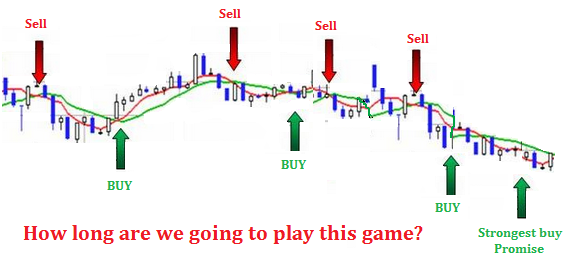As the exchange commences business every morning; a range of financial news channels play a trendy adrenaline pumping music. A market opening countdown timer adds to the excitement with the millisecond number scrolling faster than the speed of light. The anchor of the show starts speaking loud and fast. Suddenly, green and red colored tickers start scrolling all over the screen. As the day goes on, finance news channels come out with absolutely stunning moving graphic tickers, meters and gauges to measure volatility, fear, greed and much more. Those who trade based on these tools get active; some others look at them in admiration. Mostly, neither of them has a clue about the stock market.
This is not a good thing.
The market nevertheless offers a myriad of easy and complex products, to anyone who has mastered the art of punching orders.
Buying and Selling Stocks Frequently?
Often, buying and selling happens on the basis of short term news flows (i.e. positive and negative news about the company). Analysts and fund houses regularly research companies and come out with quarterly and annual financial projections. Based on these projections investors buy and sell stocks frequently with the objective of being the first ones to benefit from any expected movement in share prices.

There is no doubt that in the long term, price of a share rises and falls based on how well the business of the company performs. However, the lust for making quick money incentivizes people to study charts and trends more than businesses. The temptation is such that even those who are convinced that their portfolios consist of the best long term stocks cannot resist trading.
My point is not that you will always lose money when you buy and sell stocks frequently. In fact, I know a few traders who have multiplied their wealth at a very quick rate. I only worry about the sustainability of trading income, especially in the equity markets. Besides, the odds are stacked so highly against traders that it is very difficult for them to compete with a seasoned long term investor.
In case it is of interest, you can read something I wrote a few days back where I made a case for having a long term investment plan.
My view – If you focus on understanding businesses and invest your money with a view to make profits over a period of time, I am not sure what wrong you need to do, to still manage to lose money.
Key Points:
- Spend time understanding how the Stock Market Works and avoid investing based on rumors, tips and friendly advice, even if it comes from the CEO himself. It is just wrong. Understand what you are doing.
- Be aware: Operators and Speculators are working all around you, don’t get carried away by the sudden rise and fall of share prices.
- Resist the temptation of buying and selling stocks frequently. If you want to multiply money with 100% surety, research and find good stocks, then hold on to them them until the company’s business matures further.
I never attempt to make money on the stock market. I buy on the assumption that they could close the market the next day and not reopen it for “five years.
– Warren Buffet

